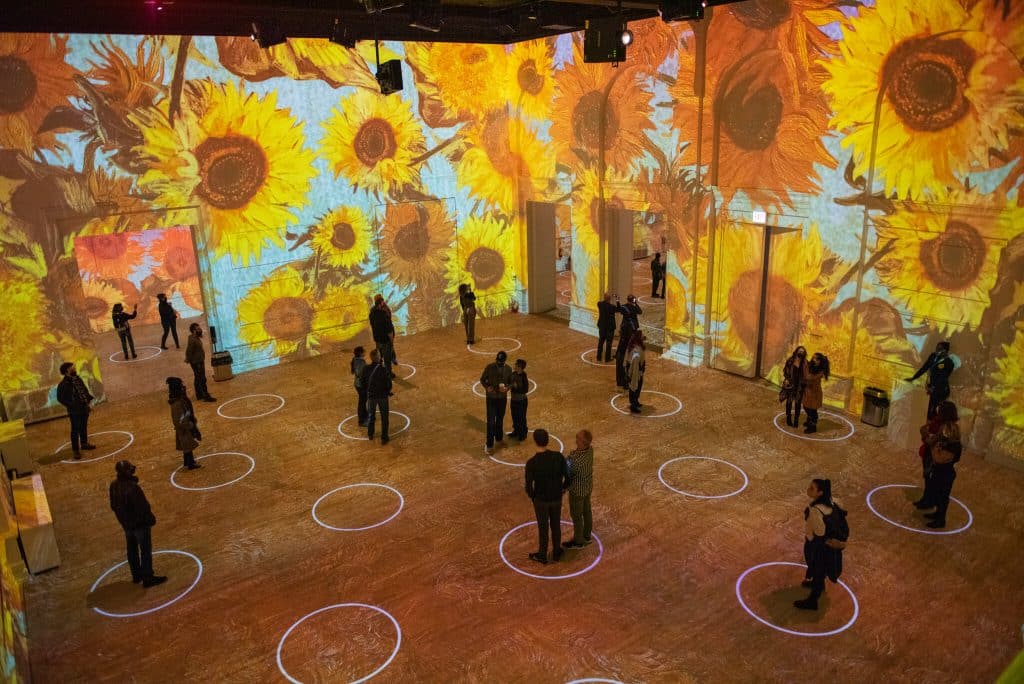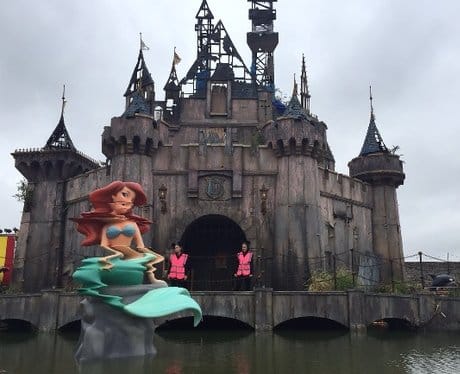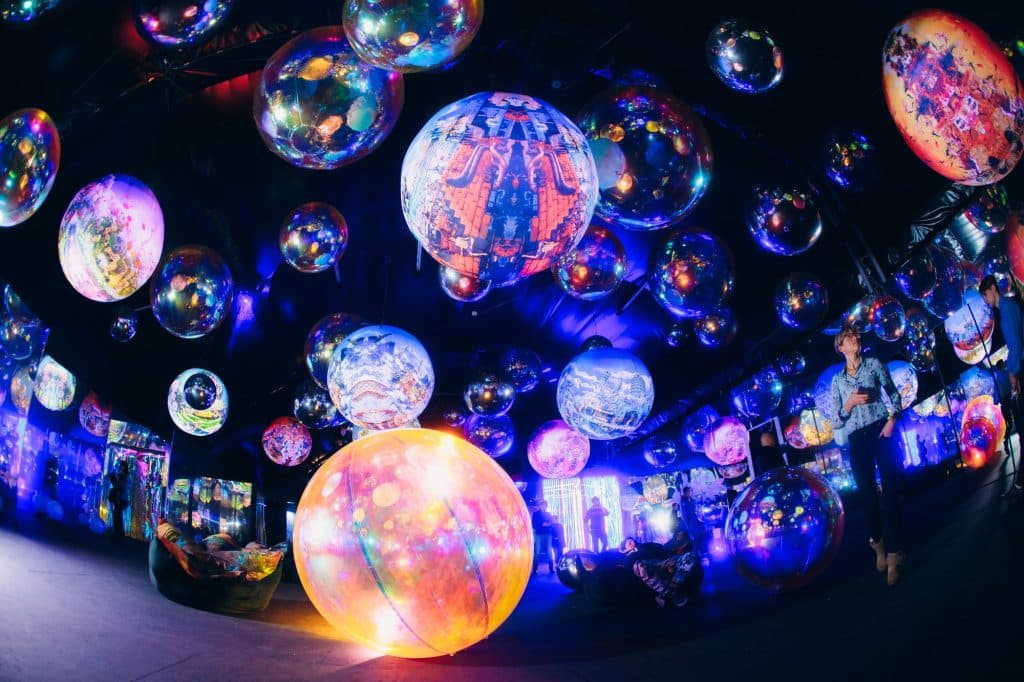Galleries have changed a lot over the years.
Gone are the days when an art exhibition would consist of simply several pieces of work displayed in a room. In the 21st century, artists and curators are always attempting to develop and improve the way that art is displayed to visitors everywhere in creative and innovative ways.
These days, it is clear that immersive art exhibitions are the future of the art world.
Whilst the main focus of any immersive exhibition, much the same as any standard artistic display, is the work itself, this work is now routinely showcased using new and exciting added elements. These often include VR experiences, live performance, etc. – each element adds a sense of immersion to the experience that leaves audiences connecting to the art on a new level.

Whilst such added elements may not particularly work in every case – some artists’ work may benefit from the simplicity and focus of attention provided by a traditional showing – there has been many cases in recent years in which using these immersive elements has lifted the exhibition entirely.
For example, Banksy’s 2015 exhibition Dismaland, a walk-through ‘bemusement park’ located in Weston-Super-Mare, UK. Until the opening of this unique new experience, Banksy’s work had always been somewhat difficult to access on an exhibitionary level to those who did not live near or travel to one of the artist’s infamous street art pieces. Through creating a body of work for display through Dismaland, Banksy was able to communicate his work directly to a brand new audience – and such an immersive experience made for a far better understanding of the work itself.
Immersive exhibitions have also played a huge role in the continuation of classic art education over the last few years. Given that younger people in 2021 are interacting and relating to classic art less and less, immersive exhibitions offer a way to bring the celebrated art of years gone by to a whole new audience. Immersive experiences and changing technology have allowed curators to display the work of world-famous artists in new ways, rejuvenating the interest in such artists’ work.

One such exhibition that has proved incredibly successful in this way is Van Gogh: The Immersive Experience. Van Gogh may be a celebrated artist, but art curators and historians are ultimately always looking for a way to ensure that this acclaim continues for years to come – through using new technology to create an immersive and interactive exhibition, the creators of Van Gogh: The Immersive Experience have been able to do so.
The walkthrough exhibition features several of Gogh’s pieces and showcases them at the centre of recreations of the areas that inspired them – for example, the famous Rhone River spot that inspired the iconic starry night painting.
Van Gogh was never appreciated truly in life – exhibitions life this one ensure that the legacy he holds now remains prevalent for years to come.

It’s hoped that by creating these immersive experiences, current modern day artists can achieve a similar level of interest in their work. After all, a piece of work can be inspired by so many different elements – the creation of an immersive experience allows the artist to showcase all of these in exciting new ways.
Whilst there will always be a place for traditional art galleries, it’s clear that immersive exhibitions are on a consistent rise – and show no sign of dipping in popularity any time soon.
More information on Van Gogh: The Immersive Experience can be found here.


